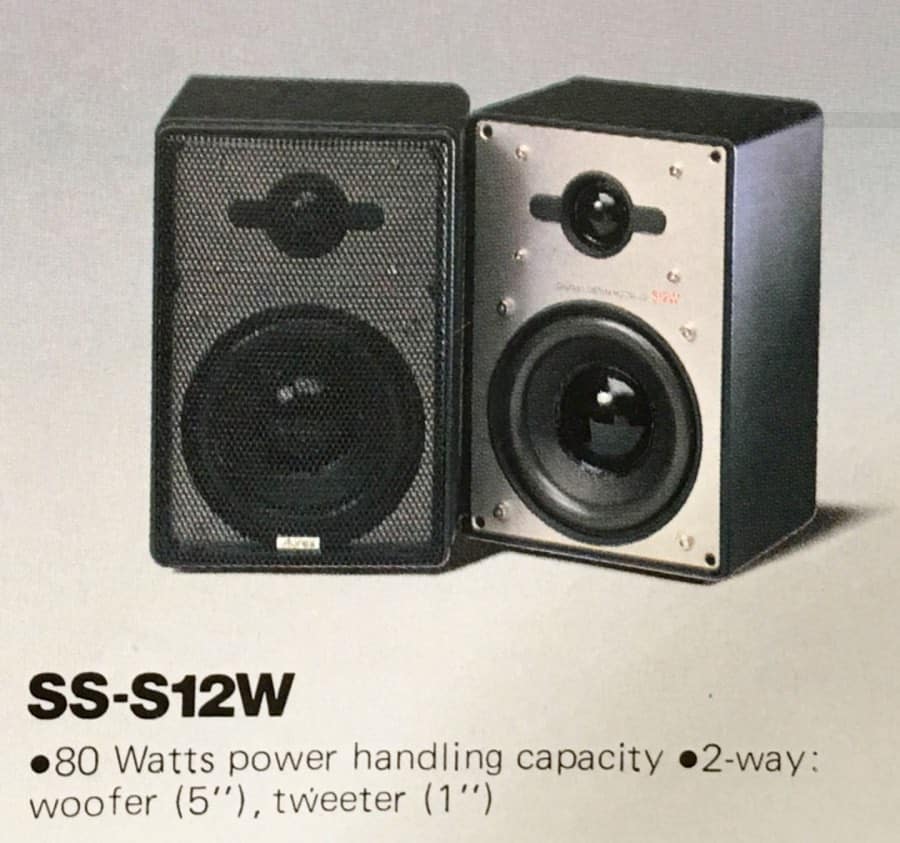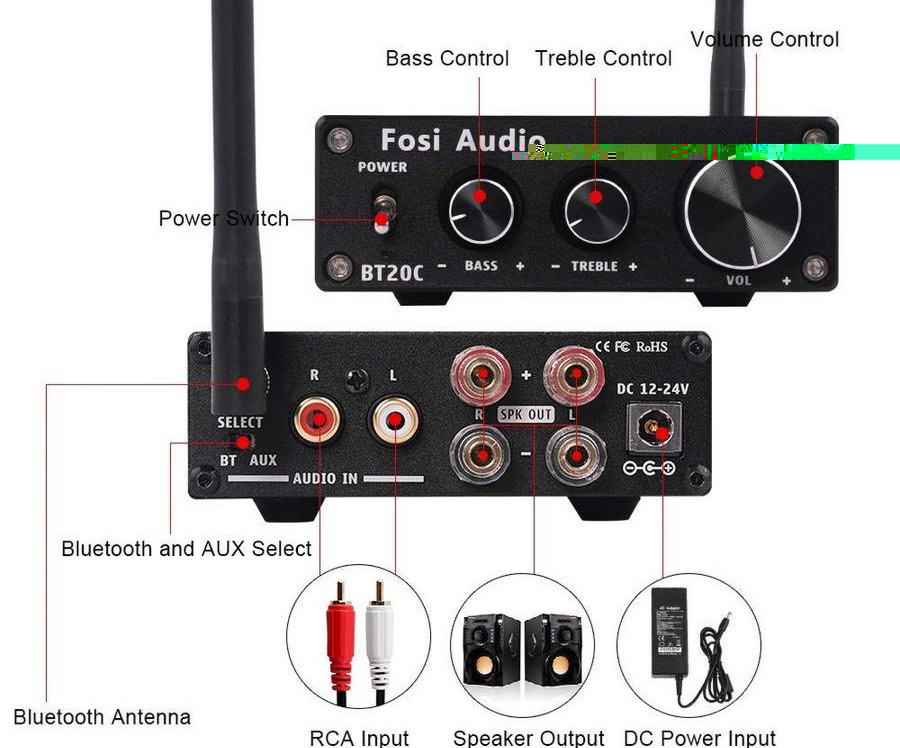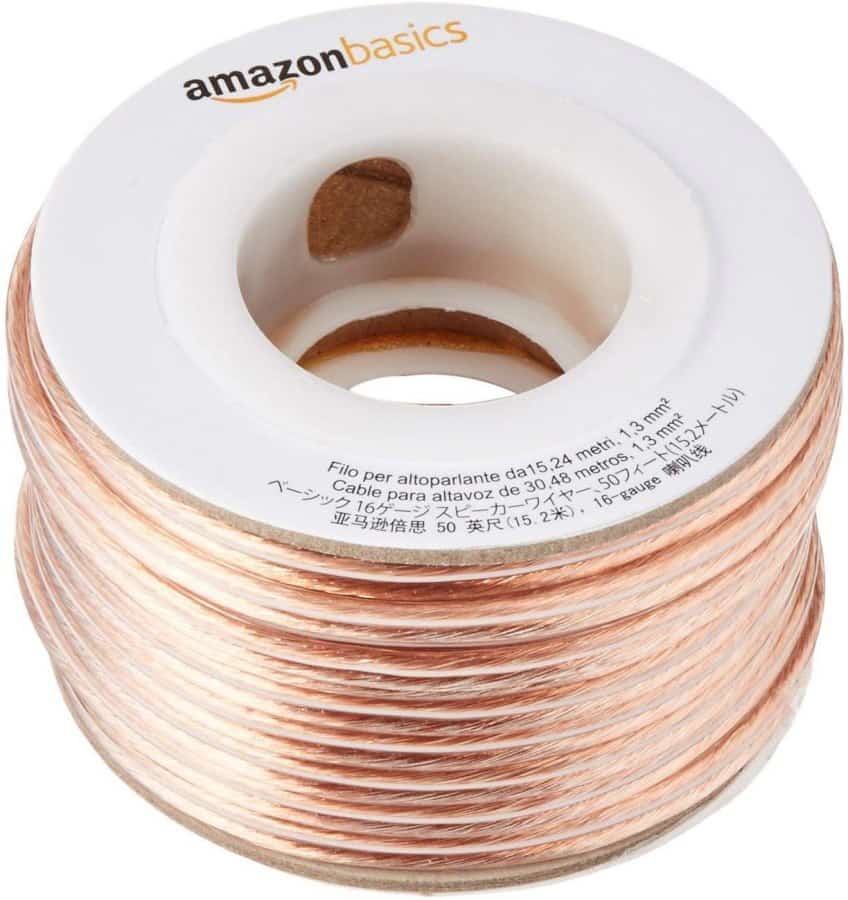
Above: Advertisement for the Aiwa SS-S12W
To create a new Covid-19 workspace at home, I gave up my desktop speaker system to the household management.
I own a larger Logitech 5.1 surround sound system that’s hooked up to my workstation in my own work space, but wanted to have something more than the built-in laptop speakers available when using that system.
Back in the day, when I ran music through an old TEAC amplifier from a turntable, I’d been using two pairs of heavy-duty bookshelf speakers, one pair made by Aiwa, the other from Toshiba. The TEAC, turntable and Aiwa units are long gone, but the Toshiba speakers still lingered on the top shelf of a storage room, a relic of a different age of audio systems.
If you’ve never seen bookshelf speakers, they are heavy beasts, eight to nine-inch speakers with massive magnets housed in heavy wooden housings stuffed with audio neutral padding. The Toshiba units also had a small tweeter.
Unlike modern computer speakers, which are an integrated audio system, analog speakers require an amplified signal to work.
I rigged an electrical pulse across the speakers to confirm that they were still working and then set about trying to figure out how to use them in 2020, easily thirty-five years since they had been bought in a budget audio store in New York.
Analog speakers offer two problems for modern computer systems. First, there are the massive unshielded magnets that powered their speakers.
Research suggested that if I kept them at least three feet away from any computer system, any residual magnetic fields would have no effect on hard drives or SSDs.
But how to push an audio signal through the units?
Unlike modern computer speakers, which are an integrated audio system, analog speakers, also known as passive systems, are not powered and require an amplified signal to work.
Fortunately, this is a problem that other people had and there are several small amplifier systems available to bridge the gap between computer audio output and analog speaker signal requirements.
I didn’t need a whole lot of power, so I chose Fosi Audio’s BTC-02, a 50-watt unit with options for connecting via Bluetooth (didn’t need it, but, hey. why not) a tone dial and volume control.
The device promised no sparking when connecting to the mains (a startling feature, but one I cheerfully accepted) and silence when not connected, eliminating audio hum. Amazon reviewers confirmed these features.
At US$75 it isn’t the cheapest unit, but it’s a featureless and neutral black box, roughly the size of a small paperback book that I expected would simply disappear on my desk until needed.
The whole project stopped when I realised that I didn’t have any suitable speaker wire left, and I was unwilling to use extension cable for a permanent installation.
While waiting on an order of entirely too much speaker wire, I tested audio response with a short length of cable and remembered why an equaliser had always been part of my audio setup.
Old-school passive speakers were designed to be audio neutral, and their response to an audio signal is surprisingly flat to ears used to the crisp and tuned response of modern computer speaker systems designed to deliver audio punch for Call of Duty, alt rock, hip-hop and metal and not, say, Mozart.
The built-in sound shaping of modern computer speakers has never appealed to me, so I’ve always had a software waveform shaper available to tame any speaker system I hooked up, inclusive of headphones.
I currently use Boom 3D, but there have been several now-obsolete software tools in my digital past.
I also took the opportunity to spruce up the old speaker boxes, masking off the speaker faces to spray paint the units flat white to match my office walls, then drilling serious support holes for the hefty units (each weighs around 30 pounds).
The final installation with wiring was straightforward, threading the lightweight speaker wire along with wall and tacking it with hot glue made for neat routing and the Fosi amplifier delivered as promised.
I do get a bit of crackling and cutouts if I push the volume to its upper limits, but that’s likely to be just the consequence of using really old speakers.
I keep the tone adjustment near the midpoint and audio colour and tone on the computer side using Boom 3D.
It’s a different sound to computer speakers for sure.
The bottom-end is heavier and more authoritative than the Logitech, even with the signal to that computer speaker is adjusted to emphasise its subwoofer.
The separation between midrange sounds like vocals and the high-end isn’t as clear and crisp as it is on computer speakers, but there’s lots of room to even out tone and create software-driven separation in the body of sound offered up by the speaker system.
It’s arguable that given the considerable time I spent on this exercise, just buying a pair of computer speakers would have been easier, but there’s something quite satisfying in bringing old speaker technology back into effective use long after it seemed obsolete.



